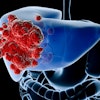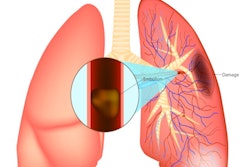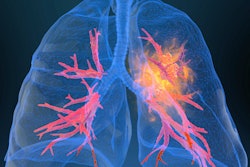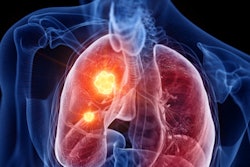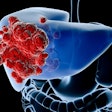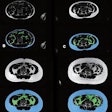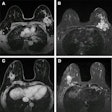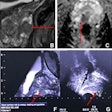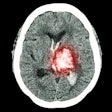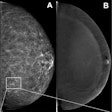
CT image texture analysis may enable low-dose CT lung cancer screening exams to also be utilized to screen for and assess chronic obstructive pulmonary disease (COPD), according to Danish research published online on 7 April in the American Journal of Roentgenology.
A team of researchers led by Lauge Sørensen, PhD, of the University of Copenhagen compared the performance of texture analysis with densitometry for quantifying COPD in a retrospective evaluation of nearly 2,000 subjects from the Danish Lung Cancer Screening Trial (DLCST). The group found that image texture analysis correlated better with measures of lung function and yielded higher accuracy for diagnosing COPD. What's more, only texture was able to offer any predictive value for a rapid decline in lung function.
The researchers retrospectively evaluated 1,915 baseline low-dose lung CT scans from the DLCST. They looked at an automated texture score, as well as two densitometric measures -- relative area of emphysema and percentile density. These three quantitative CT measurements were correlated with lung function, diagnosis of severe to mild COPD, and prediction of a rapid decline in lung function. COPD grade was determined via the Global Initiative for Chronic Obstructive Lung Disease (GOLD) criteria.
Although all the quantitative CT measures were found to be associated with lung function at baseline and decline in lung function, texture analysis had significantly stronger association (p < 0.001). In addition, it also produced a significantly higher area under the curve (AUC) for diagnosing COPD, according to the researchers.
| AUC of quantitative CT measures for COPD | ||||
| Relative area of voxels in the lung with attenuation value lower than 950 Hounsfield Units | 15th percentile density | Combination of the two densitometry measures | Texture score | |
| No COPD vs. COPD | 0.556 | 0.556 | 0.557 | 0.696 |
| No COPD vs. COPD GOLD Grade 1 | 0.515 | 0.531 | 0.518 | 0.648 |
| No COPD vs. COPD GOLD Grade 2 | 0.608 | 0.584 | 0.607 | 0.768 |
| No COPD vs. COPD GOLD Grade 3 | 0.876 | 0.783 | 0.855 | 0.944 |
Texture analysis was the only measure that offered any statistically significant value (AUC of 0.538, p < 0.05) for predicting a rapid decline in lung function, according to the researchers.
"On the basis of the results of the present study, lung texture analysis may have added value over densitometry as a CT biomarker of COPD," the authors wrote.
The researchers also observed that the combination of texture and both densitometry measures strengthened the association with lung function (p < 0.001) and decline in lung function (p < 0.05). It did not, however, improve diagnostic or prognostic performance.
"Most immediately, the measure could be used to stratify subjects in COPD trials and benefit clinical research in general," the authors wrote. "In addition, the results show a potential for COPD screening in lung cancer screening trials using low-dose CT. Finally, if low-dose CT is going to be used in clinical practice as a screening tool alongside spirometry, then texture analysis should be considered."


